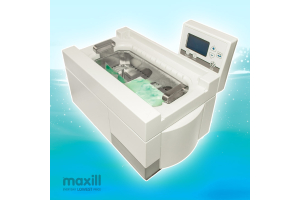Clinical Tobacco Intervention Tips for Dental Offices

Dental professionals know that patients that use tobacco products of any kind have a higher risk of oral health issues such as oral and throat cancers, chronic gum disease, tooth decay, tooth abrasion, stains, bad breath, dry mouth, impaired taste and smell, and mouth sores that do not heal.
But a study done in Alberta suggests that some oral health professionals don’t feel equipped to give advice around discontinued use of tobacco products.
The study also showed that the majority of dentists were not comfortable prescribing non-NRT medications for their patients as part of smoking cessation intervention.
Some dental professionals even questioned if they should advise stopping tobacco use at all.
It’s important to recognize the unique and important role that dental professionals play in educating their patients on the effects of using tobacco products of any kind and helping them to quit.
The Journal of the Canadian Dental Association found that advice from dental professionals has been shown to have helped tobacco users to quit.
Furthermore, advice from a dental professional combined with education about cessation medications resulted in a much higher rate of success of patients who were able to stop all tobacco product use.
So, while a dentist might not feel comfortable writing prescriptions, it is important that tobacco use is talked about at dental appointments.
Everyone in the dental office plays an important role in tobacco intervention.
From office environment to patient treatment, there are several tobacco interventions dental professionals can take.
Clinical Tabaco Intervention Tips for Dental Offices
Office Intervention Tips:
- Create a no-smoking environment by displaying ‘No Smoking’ signs.
- Make smoking-cessation literature available in the waiting room.
- Display posters of patients before and after tobacco cessation treatment.
- Include tobacco use questions in the patient intake forms. This will help with patient treatment as well as the type of education offered to the patient around tobacco use.
Staff Intervention Tips:
- Train all dental staff in smoking cessation (training can be accessed through local health units and continuing education programs).
- Standardize intervention strategies so patients get the same message from all personnel.
- For credibility reasons, all dental staff members using tobacco should be helped and encouraged to quit.
Patient Treatment:
- Patient strategies should be dependent on patient addiction level and willingness to quit – Tobacco intervention strategies for a patient just thinking about quitting are not going to work for a patient who is committed to stopping all tobacco use.
- Dental professionals should evaluate tobacco use at every single appointment to keep the treatment options they offer relevant to the stage of quitting the patient is.
- For heavy tobacco users, dental professionals should limit themselves to brief patient education as they will require intensive behavioral therapy from another health care professional.
- Remember that tobacco use relapse is common. Relapse is a good opportunity to encourage patients to learn from relapses and help them develop strategies to prevent relapsing again.
Tobacco Cessation Therapeutic Goals and Interventions Based on Stages
When implementing successful clinical tobacco intervention in dental offices, it’s important for dental professionals to recognize the stages of quitting.
It’s not going to be helpful for a dental professional to educate their patient on how to stay off tobacco if the patient is only just thinking about quitting.
It is important to note that patients should never be pressured to quit.
Instead, dental professionals should educate their patients through each stage of their journey to a tobacco-free life.
Each stage should be completed one at a time and not rushed through.
Tobacco use relapse is very common, which is why it is important for dental professionals to evaluate tobacco use at each appointment.
A patient who has already quit (action stage) at one appointment could need education and information on NRT’s (preparation stage) due to relapse at their next appointment.
Below is a graphic to summarize the stage and goals of tobacco cessation and intervention tips based on each stage.
It is also equally important to not shame a patient for relapsing.
Dental professionals can help their patients through relapses by encouraging them to learn from setbacks and develop strategies to prevent relapsing in the future.
To Sum It Up:
It’s important to recognize the unique and important role that dental professionals play in educating their patients on the effects of using tobacco products of any kind and helping them to quit.
Everyone in the dental office plays an important role in tobacco intervention.
From office environment to patient treatment, there are several tobacco interventions dental professionals can take.
Because relapse is so common, tobacco intervention should be an ongoing treatment plan and patients should be evaluated for tobacco use at each appointment.
| Stage | Goal | Intervention |
|---|---|---|
| Precontemplation |
|
|
| Contemplation |
|
|
| Preparation |
|
|
| Action |
|
|
Sources:
- https://jcda.ca/h1
- https://www.dentalhealthalberta.ca/wp-content/uploads/2019/12/guide-for-counselling-smokers.pdf
- https://www.cda-adc.ca/jcda/vol-67/issue-3/153.pdf
- https://www.cdc.gov/oralhealth/publications/features/dental-pros-help-your-patients-quit-tobacco.html
- https://www.dentalhygienecanada.ca/dhcanada/DHCanada/Substance_Use/Tobacco.aspx





